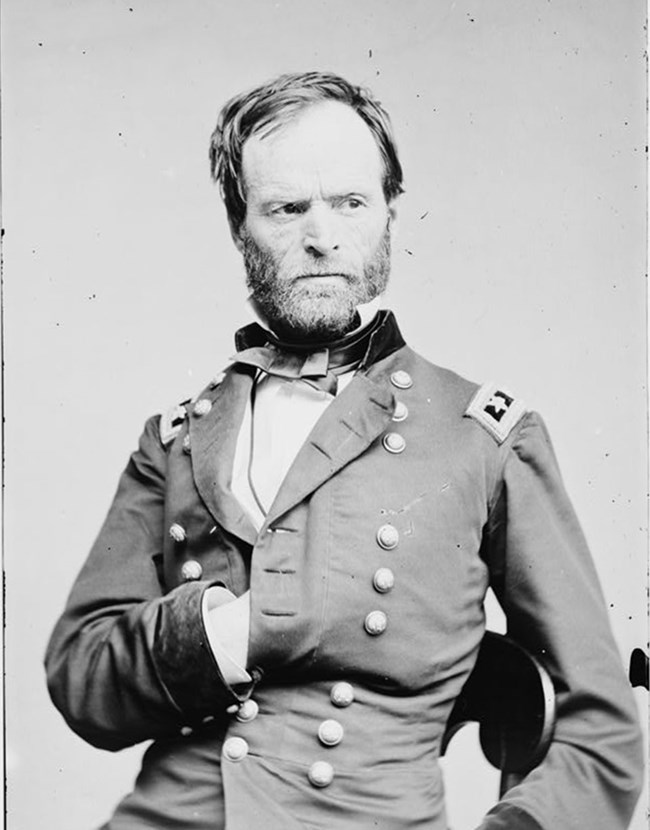
Library of Congress “Moultrieville, on Sullivan’s Island quite near the fort, was at that time a place of fashionable resort during the summer season for the wealthy families of Charleston and South Carolina generally, many of whom had temporary residences there, to which they removed on the approach of hot weather to escape from the malarious influences of the city and lower country, and enjoy the cool breezes and the sea-bathing. Officers of the army were at that time sought after and hospitably entertained by nearly all of the better classes of society in the South, and Lieutenant Sherman was thus, upon his arrival at Fort Moultrie, ushered into a life entirely new to him.” Like Robert Anderson, he served in the Second Seminole War, but unlike many of his contemporaries he did not see conflict in the Mexican-American War, serving instead in California. He resigned his commission in 1853 and pursued an unsuccessful career in banking in Louisiana. As the nation began to split apart, Sherman resigned the superintendency of the Louisiana Military Academy, a post he had held since 1859, and rejoined the Army. Sherman commanded a brigade in the First Battle of Bull Run or Manassas, capturing the attention of President Lincoln. He was quickly promoted to brigadier general and sent to Kentucky to help keep the border state in the Union. Sherman gained fame in his coordination with General Ulysses S. Grant in the successful campaign to capture Vicksburg, Mississippi. Sherman followed this victory with an independent command over all troops in the Western Theatre. His capture of Atlanta and pursuit of Confederate General Joseph E. Johnston’s army helped President Lincoln win his reelection in 1864. His “March to the Sea” featured brutal tactics that brought the devastation of war to civilians. His force cut communications with other Union armies and lived off the land, cutting a wide swath of destruction across the middle of Georgia. Sherman targeted the Confederacy’s economy and their psychological will to continue the war. Sherman’s capture of Savannah before Christmas 1864 capped a successful campaign. Next, he turned his forces towards South Carolina where the war had started. His Carolinas Campaign in the opening months of 1865 finally forced the Confederates to evacuate Charleston Harbor, including Fort Sumter, as their supply lines and communications were cut off after Sherman captured and sacked Columbia, the state capital, on February 17. In late April 1865, he oversaw the largest Confederate surrender of the war when General Joseph E. Johnston surrendered all Confederate forces in Georgia, Florida, and the Carolinas. After Grant’s accession to the presidency, Sherman became General of the Army from 1869 to 1883, overseeing the expansion of the nation westward and wars with Native American tribes. Sherman died in New York City in 1891 of pneumonia. General Joseph E. Johnston, his former opponent, served as one of the pallbearers in the funeral procession. |
Last updated: August 12, 2018
